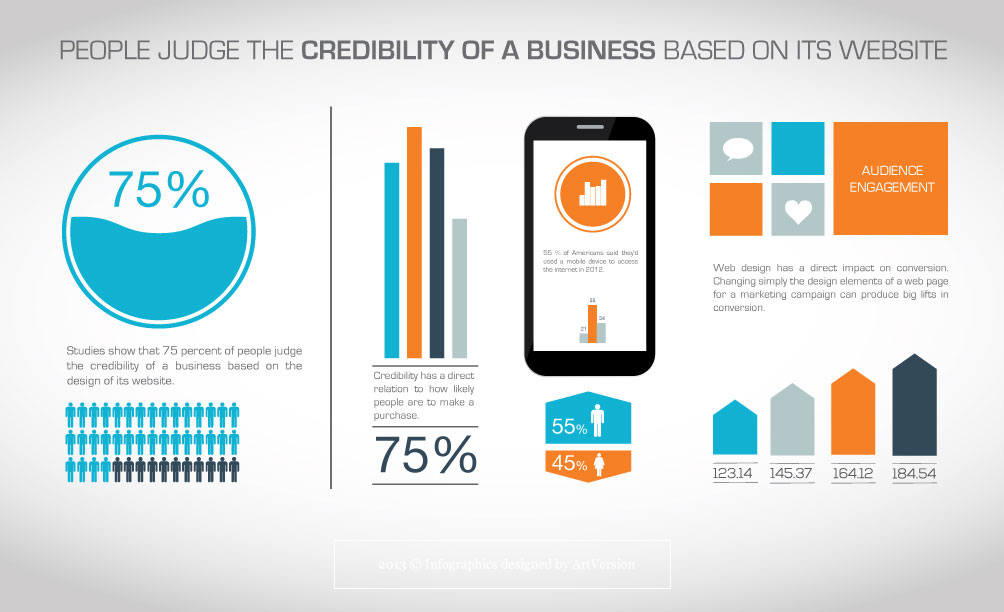The Development Of Website Style: From Past To Existing
The Development Of Website Style: From Past To Existing
Blog Article
Write-Up By-Kinney Bojesen
In the past, sites were straightforward and focused on details. Navigating was straight, and design was for desktops. Now, customer experience is essential. Data guides styles for very easy navigation. Responsive layouts fit different gadgets. Today, dark setting lowers pressure, and minimalist food selections boost navigating. Interactive functions involve individuals, and vibrant visuals stick out. AI assimilation improves engagement. See how style has advanced to boost your on-line trip.
Very Early Days of Web Design
In the very early days of web design, simplicity preponderated. Internet sites were fundamental, with restricted colors, fonts, and layouts. The focus was on offering details instead of flashy visuals. Users accessed the internet with sluggish dial-up links, so rate and performance were key.
Navigating food selections were straightforward, normally situated at the top or side of the web page. Websites were developed for home computer, as mobile browsing had not been yet widespread. Material was king, and developers focused on simple readability over complicated design elements.
HTML was the key coding language used, and designers needed to work within its restraints. Animations and interactive features were very little compared to today's criteria. Sites were static, with little vibrant web content or individualized individual experiences.
Rise of User-Focused Design
With the evolution of internet site design, a change in the direction of user-focused design concepts has actually come to be progressively noticeable. Today, developing websites that focus on individual experience is important for engaging visitors and achieving service goals. User-focused design involves comprehending the requirements, preferences, and actions of your target market to tailor the website's design, material, and includes accordingly.
Developers currently perform complete research, such as customer studies and usability testing, to collect insights and feedback straight from customers. This data-driven strategy helps in developing intuitive navigation, clear calls-to-action, and aesthetically attractive user interfaces that resonate with site visitors. By putting why not try these out at the center of the style process, sites can provide a much more personalized and satisfying experience.
Responsive style has additionally emerged as a vital facet of user-focused design, making certain that internet sites are maximized for numerous gadgets and display sizes. This flexibility improves accessibility and usability, satisfying the diverse ways users engage with websites today. Basically, the rise of user-focused layout indicates a shift towards producing electronic experiences that prioritize the demands and expectations of the end customer.
Modern Trends in Web Design
Discover the current fads forming website design today. One famous pattern is dark mode layout, using a sleek and contemporary look while decreasing eye stress in low-light atmospheres. Another essential trend is minimal navigating, streamlining menus and enhancing user experience by focusing on essential elements. Incorporating micro-interactions, such as animated buttons or scrolling results, can produce a more appealing and interactive website. Responsive style stays vital, making certain seamless user experiences throughout different devices. In addition, utilizing vibrant typography and unbalanced designs can add visual interest and draw attention to particular content.
Incorporating AI innovation, like chatbots for customer assistance or tailored recommendations, boosts customer involvement and improves processes. Accessibility has likewise become a considerable trend, with designers prioritizing comprehensive design techniques to cater to diverse individual demands. Accepting see this site by optimizing site efficiency for speed and efficiency is an additional arising trend in web design. Teaming up with customer responses and data analytics to iterate and improve layout constantly is important for staying relevant in the ever-evolving digital landscape. By embracing these contemporary fads, you can create an aesthetically attractive, user-friendly website that reverberates with your target market.
Conclusion
As you assess the evolution of site style from the very early days to now, you can see exactly how user-focused style has become the driving force behind modern-day trends.
Embrace the trip of change and adjustment in website design, constantly maintaining the customer experience at the forefront.
Tippingpointdigital
Keep present with the latest patterns and technologies, and never ever quit advancing your method to produce visually stunning and easy to use sites.
Evolve, adapt, and produce - the future of website design is in your hands.
